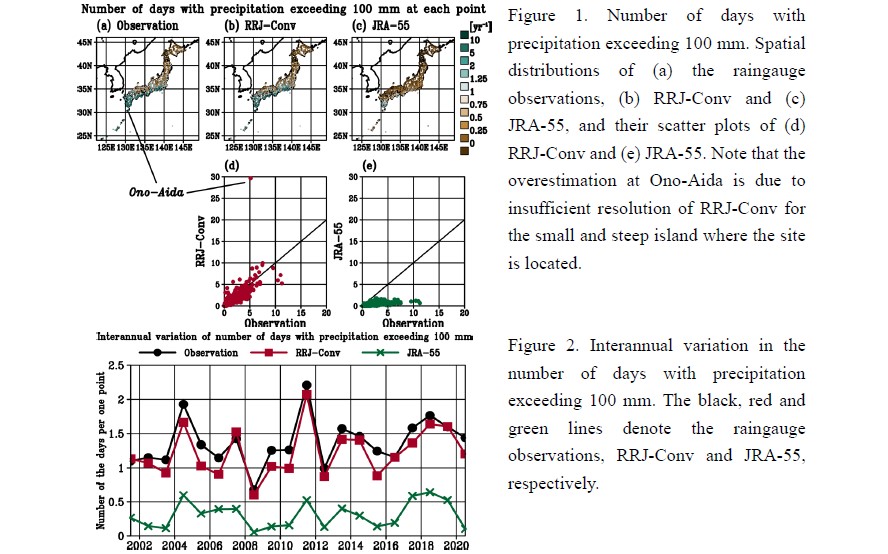JMSJ Highlights
Editor's Highlight : Fukui et al. (2024)
Fukui, S., E. Shirakawa, D. Soga, R. Ohara, K. Usui, K. Takiguchi, K. Ono, T. Hirose, S. Matsushima, J. Ito, T. Yamazaki, K. Saito, H. Seko, and T. Iwasaki, 2024: Long-term regional reanalysis for Japan with assimilating conventional observations (RRJ-Conv).
J. Meteor. Soc. Japan
,
102
, 677-696.
https://doi.org/10.2151/jmsj.2024-036
Graphical Abstract
Special Edition on Research on the Frontier of Atmospheric Science with High Performance Computing
Editor in charge: Yohei Sawada
-
We highlight this paper which describes a 5-km long-term atmospheric regional reanalysis for Japan with assimilating conventional observations (RRJ-Conv). (HPC Special Edition Editorial Committee)
- RRJ-Conv is generated by assimilating surface pressure and radiosonde upper-air observations and Tropical cyclone center positions into a meso-scale atmospheric model using an ensemble Kalman filter.
- RRJ-Conv successfully provides a long-term consistent atmospheric regional reanalysis from July 2001 to June 2021 and significantly outperforms the JRA-55 global reanalysis in terms of the representation of extreme daily precipitation.

Abstract
We are conducting a 5-km long-term atmospheric regional reanalysis for Japan with assimilating conventional observations (RRJ-Conv). RRJ-Conv is produced with a one-way double-nesting system consisting of a nonhydrostatic regional model and a local ensemble transform Kalman filter, which is driven by the Japanese 55-year reanalysis (JRA-55). The assimilated data are limited to long-term available data, specifically surface in-situ pressure observations, upper-air radiosonde observations, and tropical cyclone center positions.
This paper overviews the performance of RRJ-Conv for 20 years from July 2001 to June 2021, mainly focusing on precipitation and exploring added values to JRA-55. RRJ-Conv is confirmed to maintain long-term consistency of analysis quality. Compared to JRA-55, RRJ-Conv reduces biases in central pressures of tropical cyclones, maintaining position reproducibility. RRJ-Conv represents detailed spatial distributions of monthly precipitation, extreme values for daily precipitation, and their interannual variation more realistically than JRA-55. The improvements to JRA-55 are demonstrated for some extreme events, involving a tropical cyclone, Baiu front and East Asian winter monsoon.






